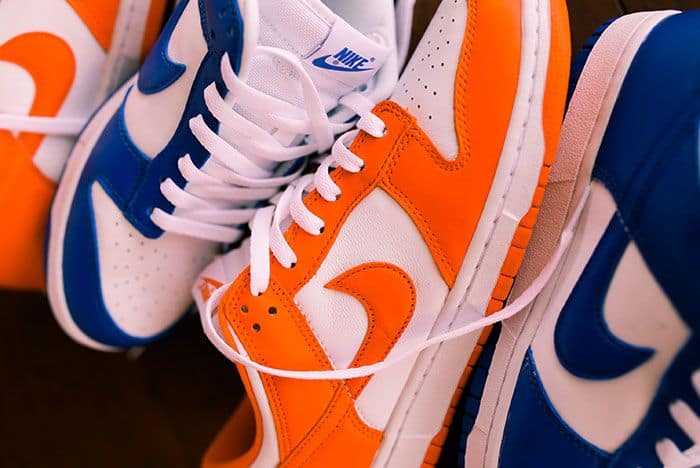
Last Updated on April 10, 2024 by Ch David
We’re here to teach you how to spot fake Nike Dunks.
In this guide, you’ll find:
You can tell if any Dunks are fake with this guide.
You can tell if Nike Dunks are real by looking at the interior side of the tongue. Fakes always have slanted text and misplaced inscriptions.
Fast answer: Fake Nike Dunk pairs always have their letters wavy and at different font-weights.
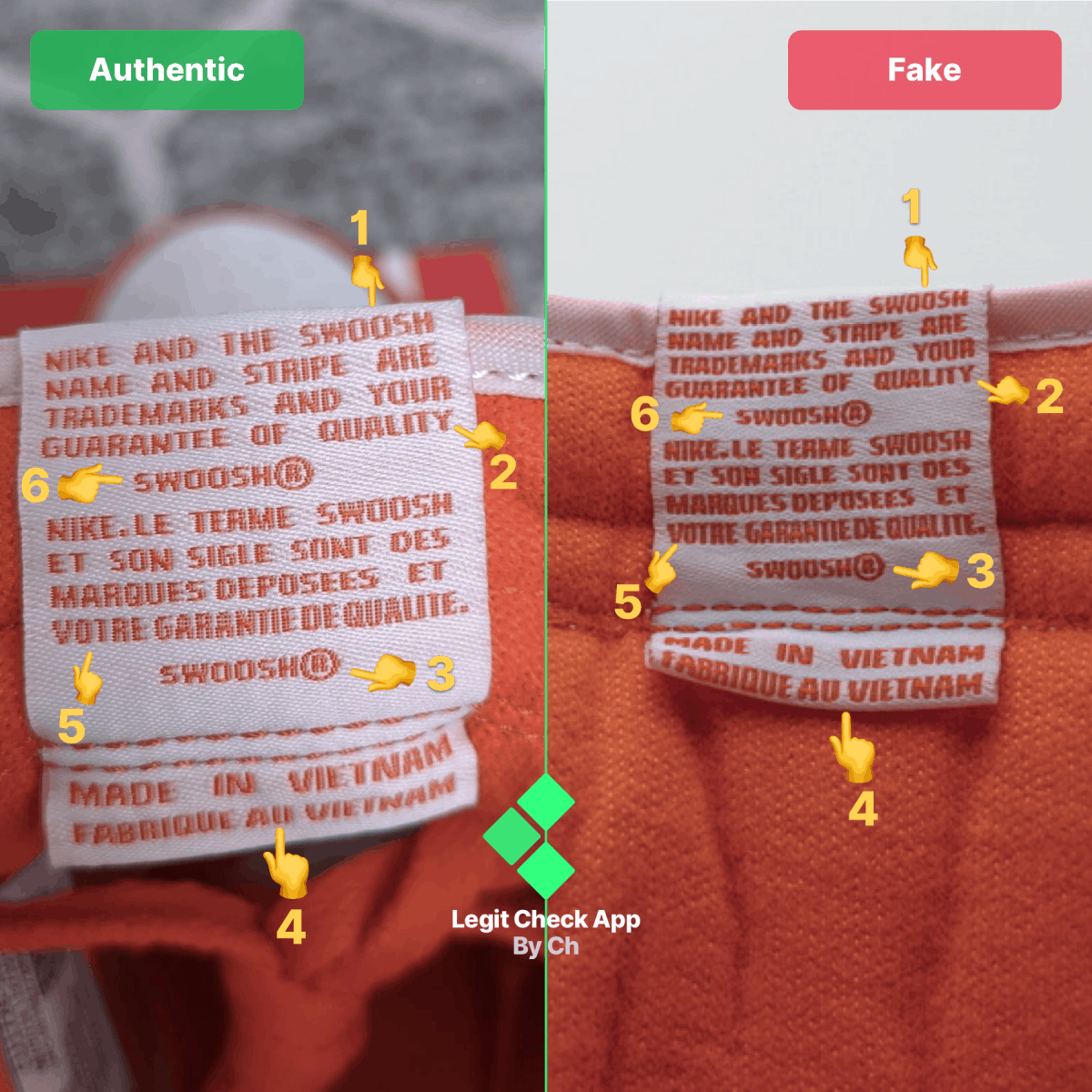
To conclude the first step: Authentic Dunks must have the same thickness for all the text.
The inscriptions should also be perfectly aligned on the label, without looking wavy. It’s all about high-quality, worth for the price you pay[1].
Fast answer: Fake Dunks have extra threads in “NIKE”.
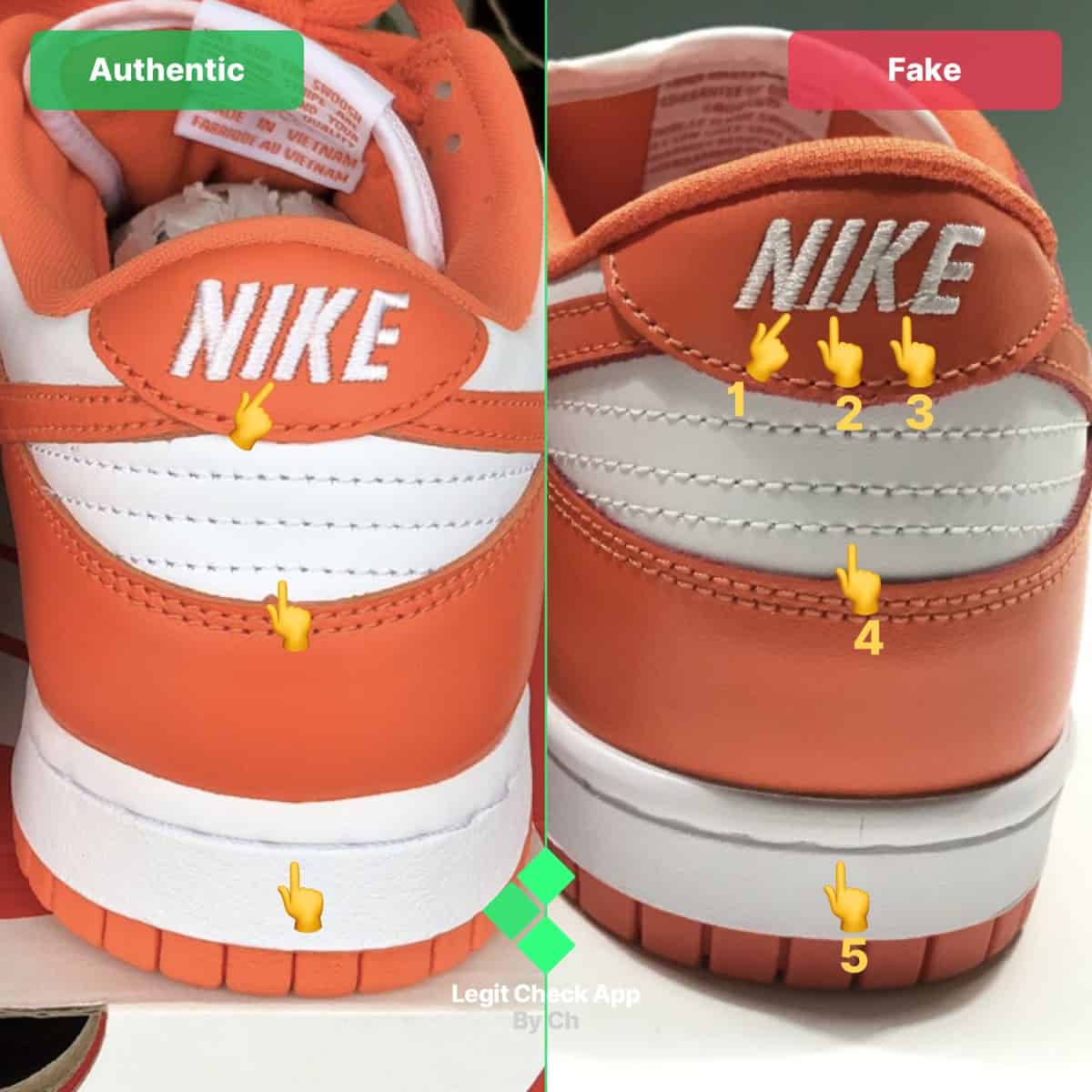
Related Dunk legit check guides: Lobster Dunks, Travis Scott Dunks, Nike Dunk High.
Can’t tell if your Dunks are fake? Let our expert teams check them for you.
Fast answer: Replica Nike Dunk pairs don’t have the top of their Swoosh as sharp as the real deal.
With Dunks being so highly-replicated[2], exterior details are what matters to fake makers.
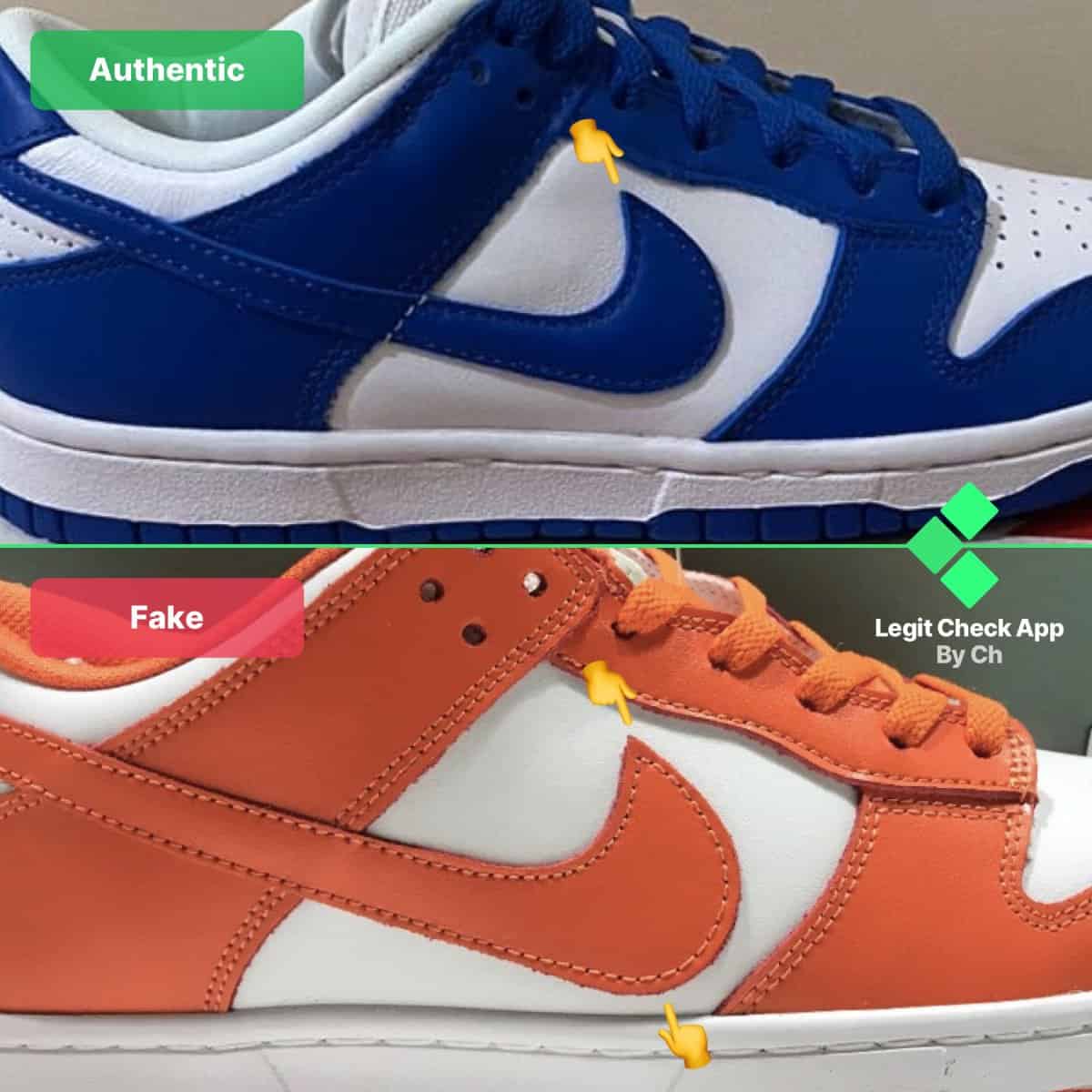
Fast answer: Fake Nike Dunk Low pairs always have their text too thick. Sometimes, the text is also visibly too thin.
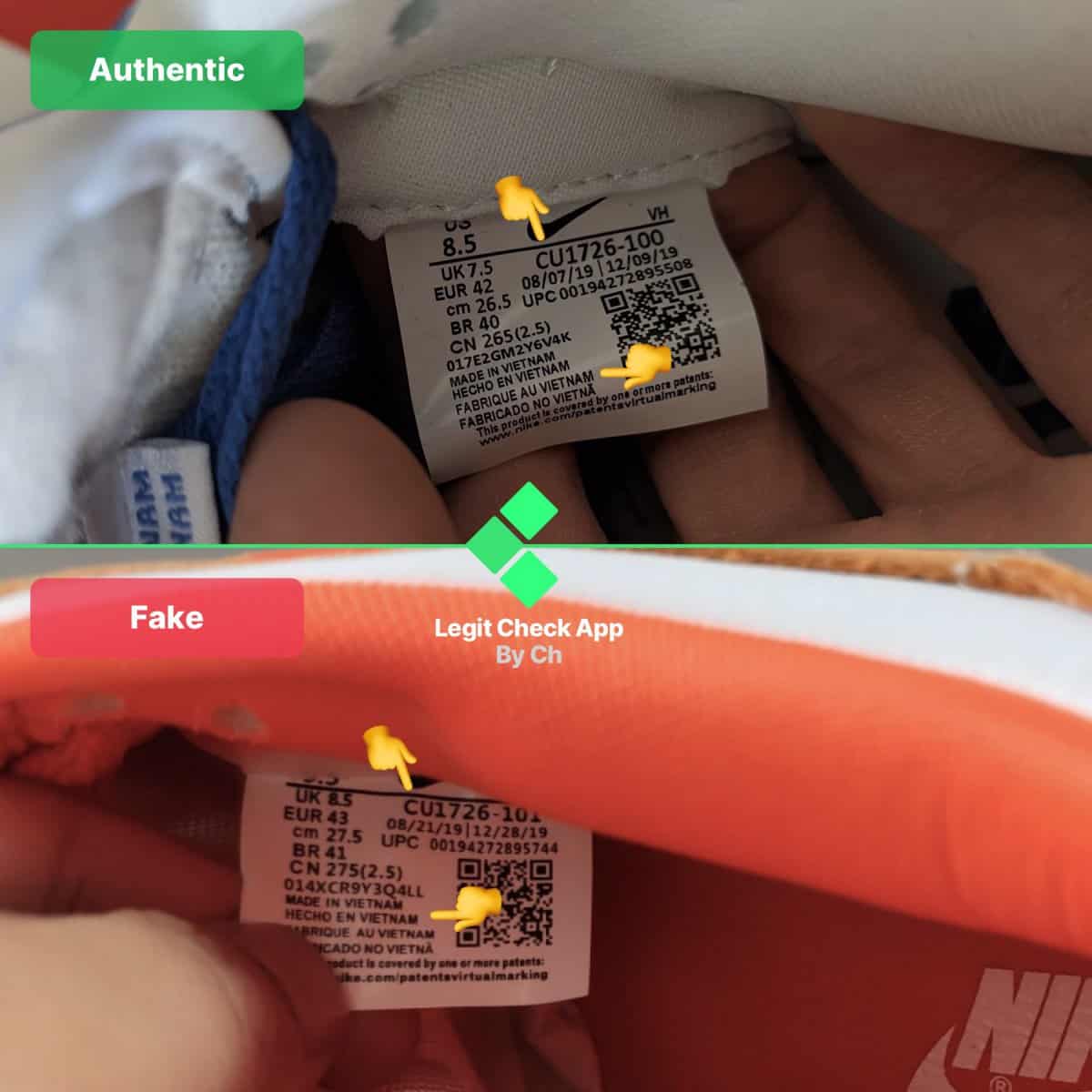
Nike follows a standard size tag design for all authentic Dunks.

A quick mention:
If in doubt, we recommend double-checking the steps we’ve explained above this line.

Fast answer: The ® symbol is too thick.
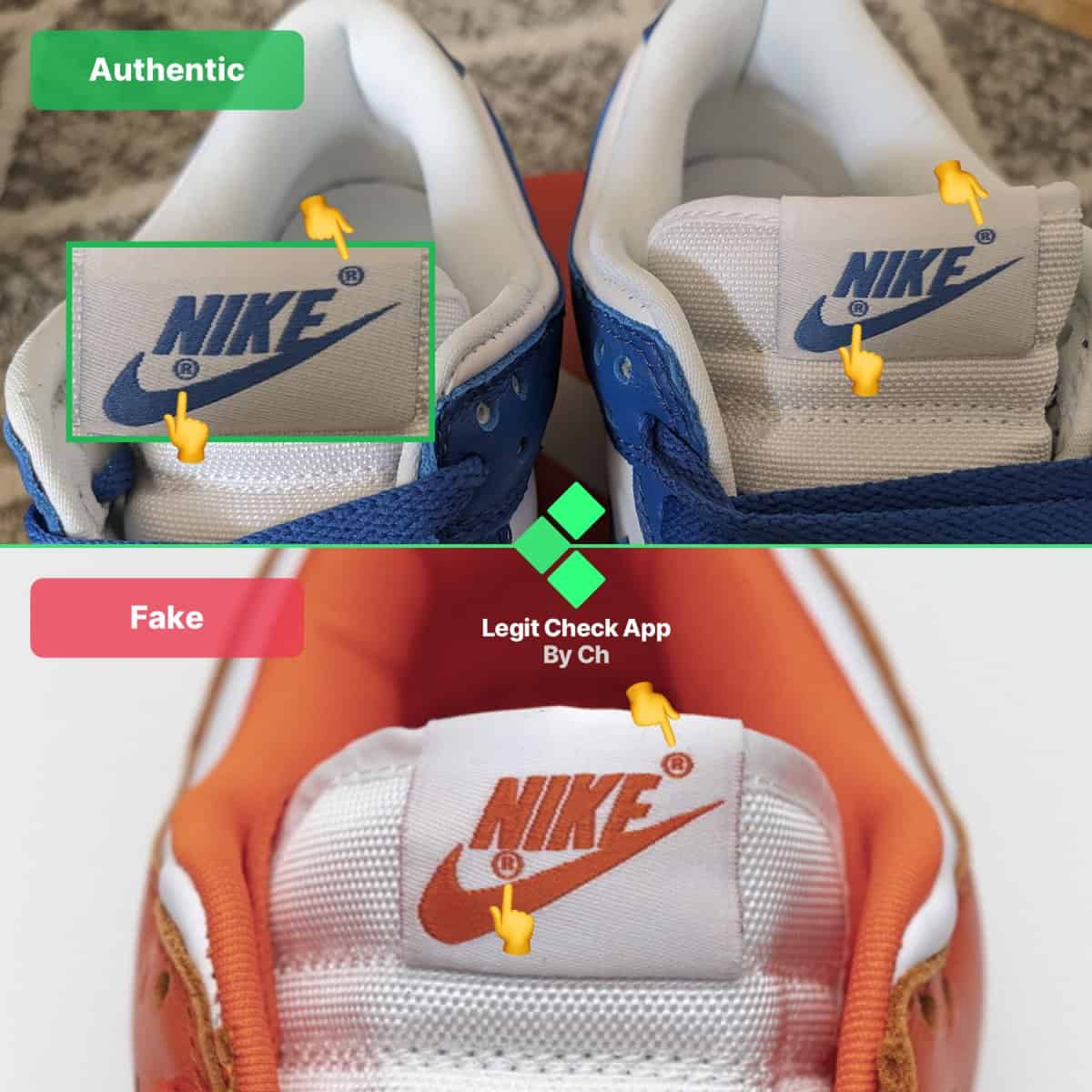
Fast answer: Holes are too narrow and not deep enough.
The perforations are these little holes in front of the shoes:
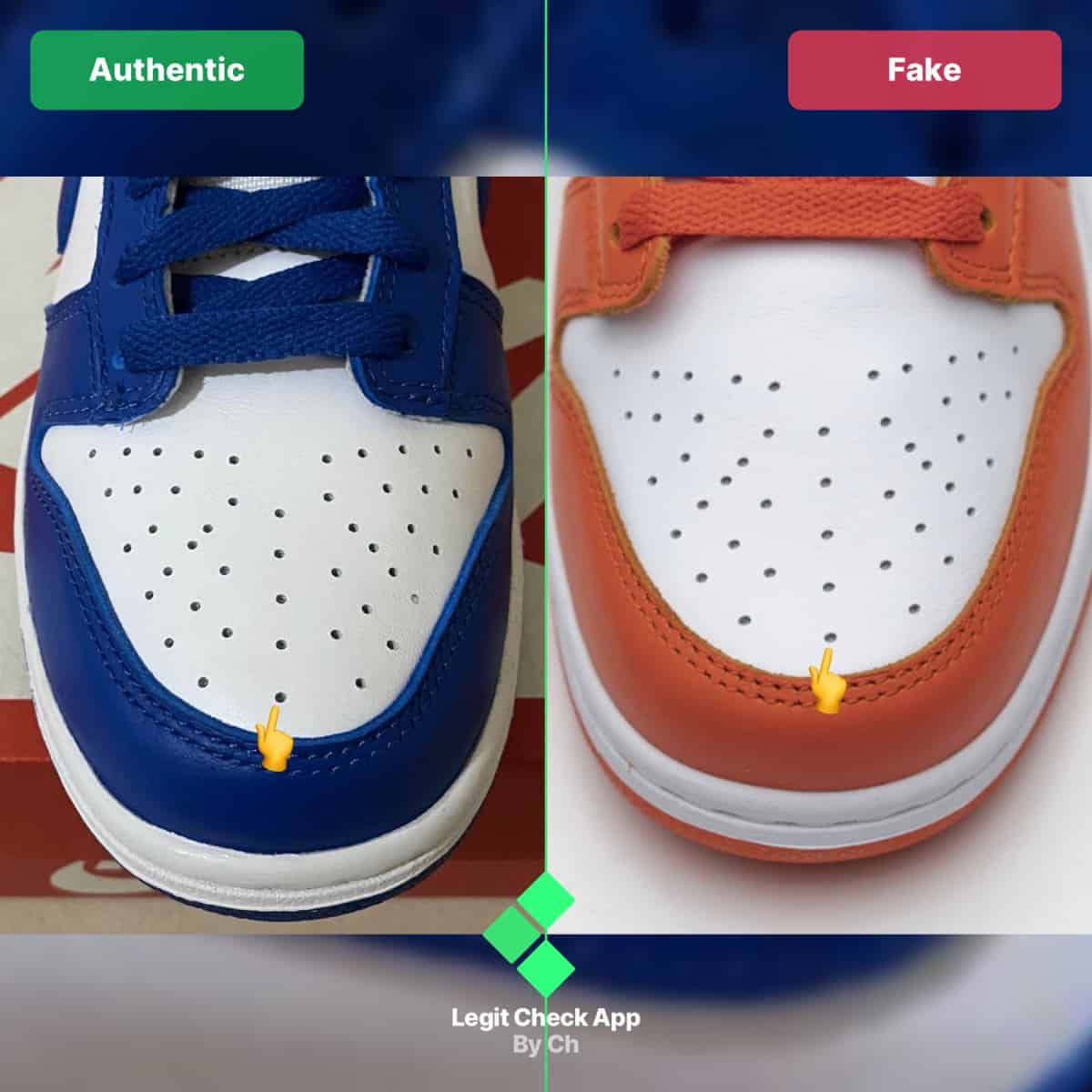
Fast answer: Midsole stitching is too thin on the reps.
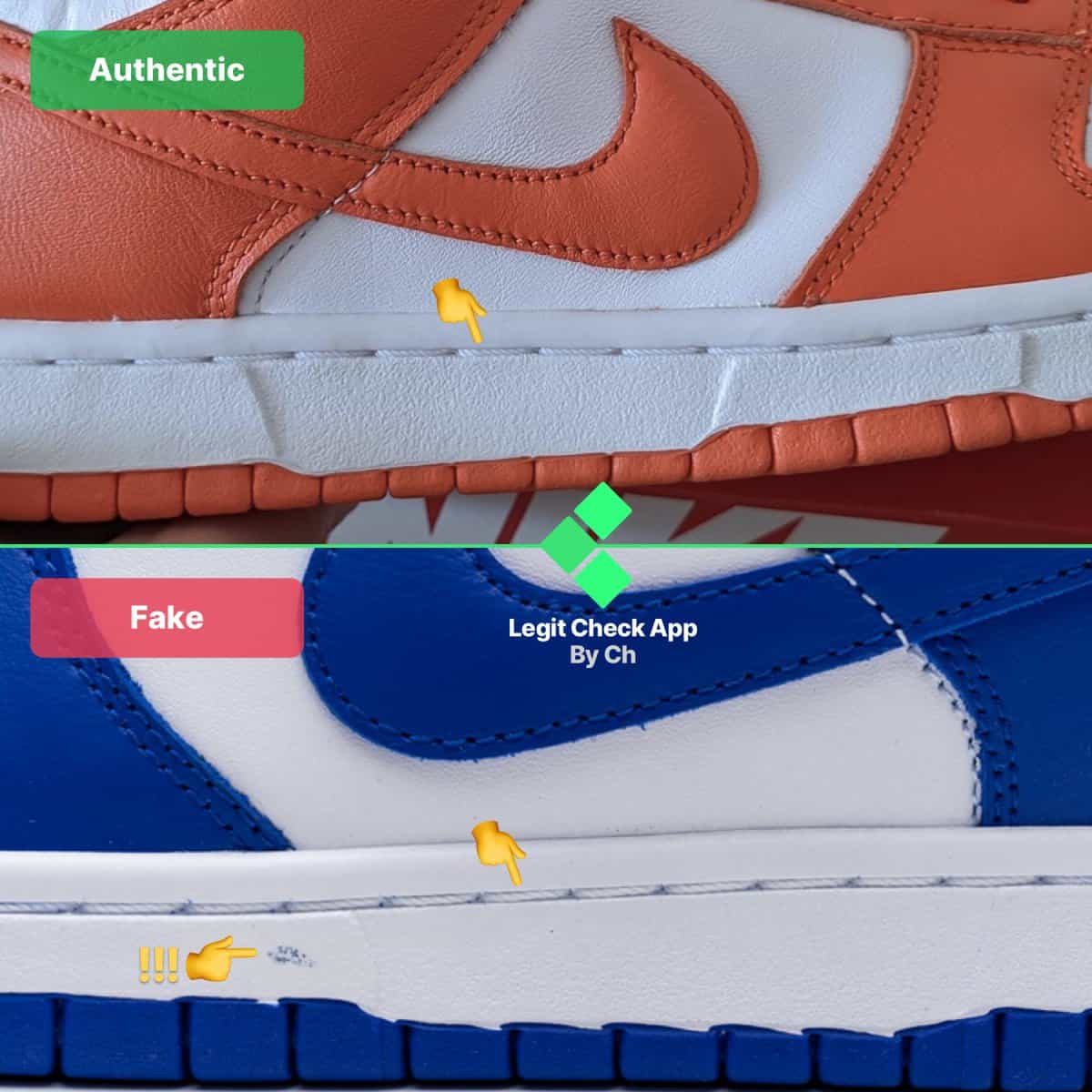
Rare flaw: Some fake Dunks may have additional paint stains on the midsole, such as the extra blue stain shown in the image. Authentic sneakers are usually free from such paint mistakes.
Fast answer: Fake toe boxes are often too heavy and bulky.
The authentic Nike Dunk Low sneakers are a pair that have their toe box looking inflated, specifically thicker and bulkier than usual. Especially on the SB Dunks!
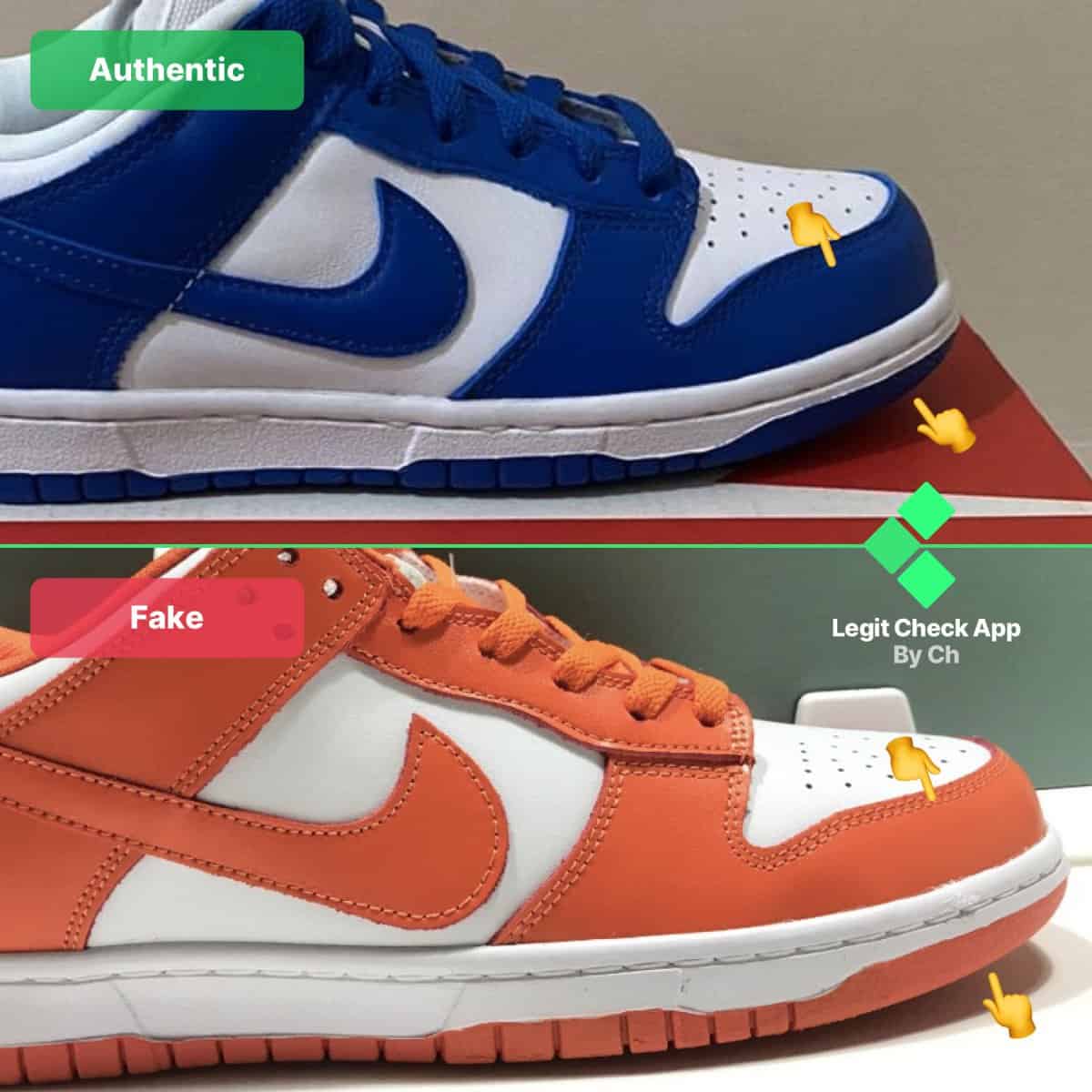
The toe box’s style differs from the regular Dunks from the SB Dunks.
For instance, the toe box on the Nike SB Chunky Dunky is different from the one in the image above.
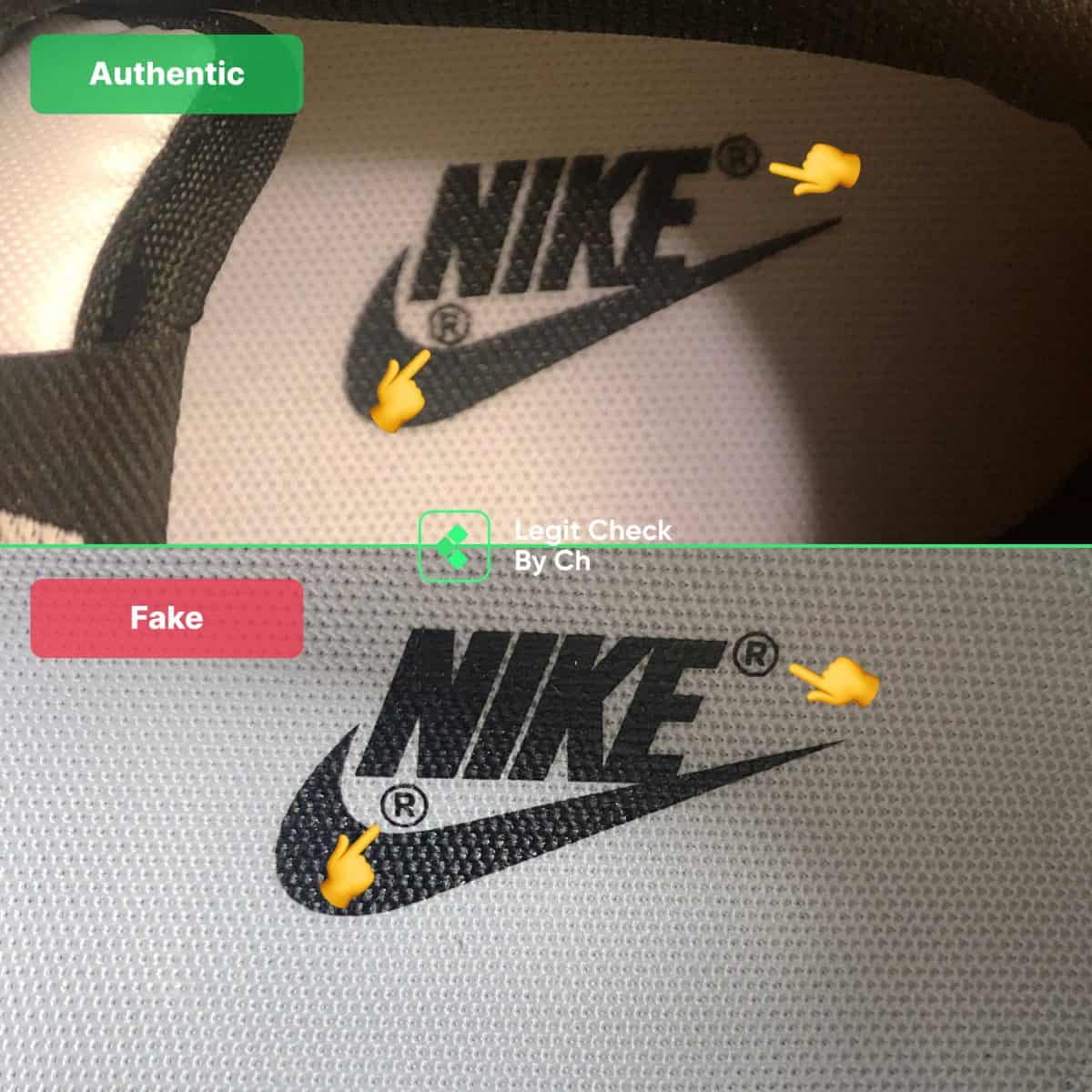
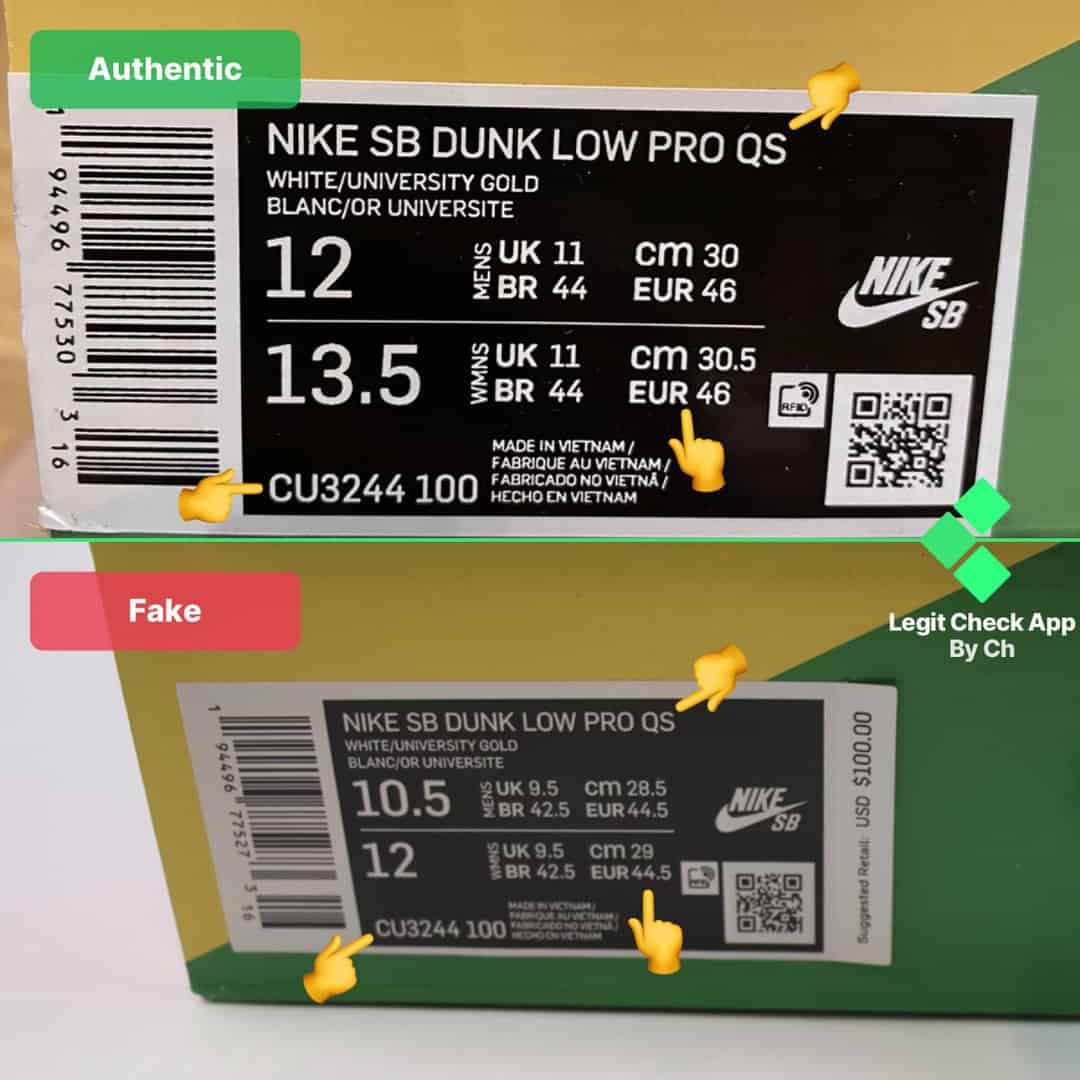
The 8 detailed steps mentioned might not be very practical when you’re in a rush or looking to buy sneakers online. This is why we’ve put together a quick 60-second guide to authenticate your sneakers.
Above are the top 8 indicators to check if you’re dealing with a genuine or counterfeit Nike Dunk Low.
If you’re having trouble distinguishing between real and fake Nike Dunk sneakers, contact Legit Check today! With just a few photos, we can help you determine the authenticity of your sneakers.
Legit Check is the best service to professionally authenticate your Nike Dunks. Our service is quick and stress-free.
That brings us to the end of our real vs fake Nike Dunk Low legit check guide.
Nike Dunks are so popular thanks to simple colour combinations for anyone’s style — especially for Gen Zs[3]. Dunks were always hot, even before the release of the Pandas and other hype colourways.
In the 1980s, there were fewer pairings more ubiquitous than Nike and sneakers. Nike Dunks were first sold along the Air Jordan 1 in 1985. They’ve since become one of the most recognizable sneakers in the world.
The Nike Dunks were the first of Nike’s sneakers to make a move towards the Skateboarding industry in the late 90s.
With the release of the Air Jordan 1s in the same period, there was no real demand for Nike Dunks. This meant that the shoes ended up on sales racks for young skaters to pick up.
Hence, the shoe became a staple of early skate culture.
A lot of the newer Nike Dunk shoes have become popular and collectable due to being emblematic of the streetwear culture that’s given rise to the ‘Sneakerhead’.
With famous artists such as Travis Scott releasing their own collectable versions of the sneaker, the Nike Dunk and Nike Dunk SBs are looking to be more collectable than ever.
We now see pairs like the Travis Scott Dunks or the Chunky Dunky selling for well over $1,000.
With this history in mind, it’s easy to see why they’re such a sought-after sneaker. It’s important to have the knowledge to figure out whether you own real vs fake Dunks.
After all, even buying the lower-end Dunks can set you back over $100 or $150, and nobody wants to pay that much for fake.
You should authenticate your Nike Dunks for the peace of mind that you know what you’re spending money on. Whether it’s fake or real, you have the right to know what you’re buying.
Collectable sneakers have become a target for counterfeiters worldwide. Their high value combined with a very widespread design has meant that there’s been a proliferation of fake sneakers over the past few decades.
With this, it’s incredibly important to check that your Nike sneakers are authentic. Knowing the difference between fake Dunks and real Dunks is crucial when collecting them.
Checking can be the difference between a good collectable and a cheap knockoff within your collection.
It’s also important to check as soon as you receive the item, as delaying could mean that you become ineligible for a claim or a refund through the marketplace or payment processor you paid with.
That’s why if you’re uncertain about how to tell if Dunks are fake, getting in touch with an expert authentication service is key.
The difference between SB Dunk and Dunk is one of design, not a signifier of inauthenticity or a cheaper model. Rest assured, buying SB Dunks is not a sign of buying fake Nike Dunks.
There are a few differences between the designs of each respective shoe, as one is made for basketball, and the other was tailored specifically for skateboarding.
| Feature | Nike Dunk | Nike SB Dunk |
|---|---|---|
| Purpose | Originally designed for basketball. | Tailored for skateboarding. |
| Padding | Standard padding. | Extra padding, especially around the tongue and collar, for better support and cushioning. |
| Sole | Traditional basketball shoe sole. | Thicker sole with more cushion and improved flexibility for skateboarding. |
| Fit | Standard fit for everyday wear. | Snugger fit to enhance foot stability on the skateboard. |
| Materials | Varied materials, but generally less robust compared to SB Dunks. | Durable materials like suede, leather, and canvas to withstand the wear and tear of skateboarding. |
| Laces | Regular laces. | Thicker laces to resist breaking. |
| Outsole | Traditional Dunk outsole. | Designed with a grippier tread pattern for better traction on a skateboard. |
| Collaborations and Designs | Various collaborations and colorways, but traditionally less focused on the skate culture. | Frequent collaborations with skate shops and artists, reflecting skate culture and heritage. |
In words, here are some of the key differences between SB Dunks are Dunks:
Yes, sometimes, even real Dunks have flaws. Factories manufacturing authentic Dunks sometimes have small errors too (e.g. missing 1 or 2 stitches), but never as deep as the fake Dunks who get labels wrong.
For instance, you may see a fake pair of Dunks having a jump-stitch or a crooked leather part, though never with slanted text on the interior tongue label or size tag.
“Where are Dunks made?” → We get this question a lot, so here’s the answer:
Authentic Nike Dunks are made in several countries, with the most common being Vietnam, China, and Indonesia.
Always check for quality and authenticity, regardless of the manufacturing country.
“Are Nike dunks made in Vietnam real?”
Yes, Nike Dunks made in Vietnam can be real. Nike manufactures shoes in various countries, including Vietnam, China, and Indonesia.
What’s important is to check for signs of authenticity, such as quality of materials, craftsmanship, and details like logos and stitching.
Buying from reputable retailers or official Nike stores is a good way to ensure authenticity.
Need our opinion on your item’s authenticity? It’s a service we provide.
Get a fully-detailed report for why you have a real or fake item. Takes less than 48 hours!
Alternatively, use our free resources: written guides and video tutorials.
Thank you for reading this,
Ch Daniel and Ch David






